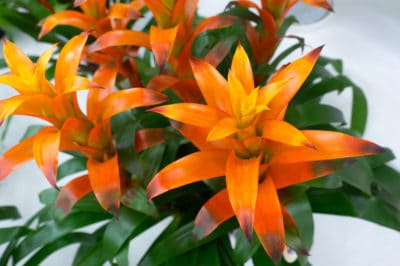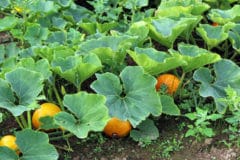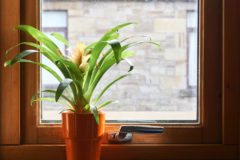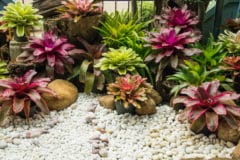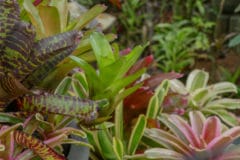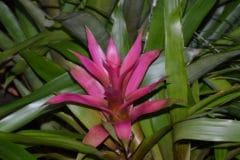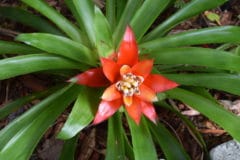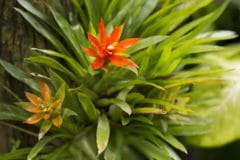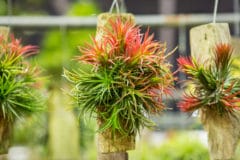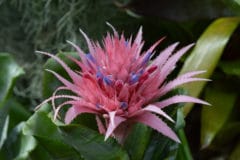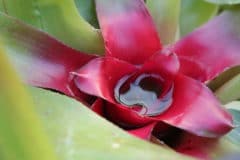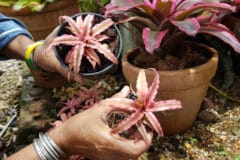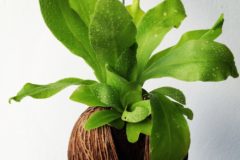Guzmania Varieties
Guzmania typically grows in a rosette pattern with a brightly colored central flower stalk called an inflorescence. Among the different varieties are:
- Brimstone – bright lipstick red.
- Conifera – red, rounded inflorescence with yellow tips.
- Francesca – purple maroon bracts with a cream-colored center.
- Nikki – deep fuchsia pink with a white center.
- Optima – broad, deep orange inflorescence.
Choosing a Pot
Guzmanias tend to be top-heavy, so make sure your pot is wide and heavy enough to balance the top growth. Glazed ceramic or terra cotta is a good choice; don’t use metal, as bromeliads are very metal-sensitive. The pot must drain well, Place several stones or broken pieces of pottery in the bottom of the pot to promote drainage.
Potting Mix
Since guzmanias use their roots primarily to attach and stabilize the plant, they don’t need rich potting soil. However, they must have soil that drains well. Many experts recommend commercial cactus or orchid mix, as both drain well. You can also mix one-third each sphagnum moss, coconut coir or fir bark, and perlite or vermiculite for your pots.
Light for Guzmanias
Guzmanias, like all bromeliads, can’t handle direct sunlight, which will damage their leaves. In the wild, they grow in filtered shade from higher trees. A window with bright indirect light is a good choice. However, they may need a south-facing window in winter, when light levels are lower. A translucent shade or blind can help control excess light.
Watering Guzmanias
Always use rainwater, distilled water or filtered water for guzmanias. Tap water often contains minerals as well as chlorine and fluoride. The water should be room temperature – remember these plants are from the tropics. Water to keep soil moist in spring and summer, the growing period. Fill the plant’s “tank” but drain frequently as well to prevent stagnant water. Allow soil to dry to two inches down between watering.
Fertilizer for Guzmanias
Bromeliads in general are relatively slow-growing. Don’t give your guzmanias too much fertilizer, as it can make them leggy and decrease their vibrant colors. Choose a balanced, water-soluble fertilizer and use it at one-quarter to one-half strength every month in the growing period. At the end of summer, place slow-release fertilizer pellets around the base of the plants – never in the plant’s central depression or “tank.”
